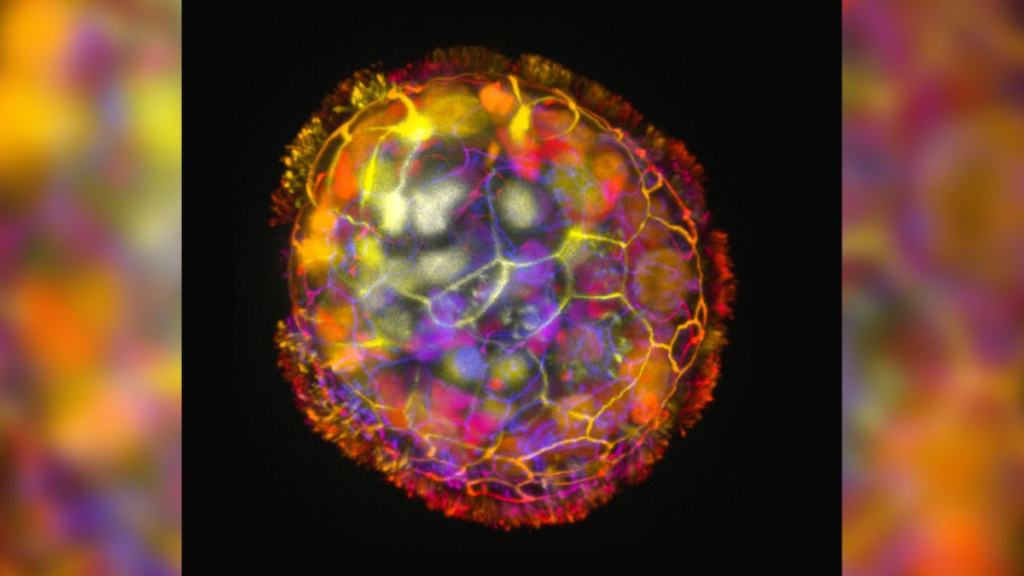Scientists from Tufts University and Harvard University’s Wyss Institute have created tiny living robots called “anthrobots” using human cells. These tiny entities, dubbed “anthrobots,” show promise in wound healing and tissue repair applications. The research builds upon the earlier creation of xenobots, the first living robots made from stem cells sourced from African clawed frog embryos. The anthrobots challenge conventional categorizations of robots, animals, and machines, highlighting the versatile competencies inherent in living cells. The anthrobots were crafted using adult human cells sourced from the trachea of anonymous donors with varying ages and genders. The self-assembly of anthrobots distinguishes them from previous biological robots, which required manual construction using molds and seeded cells. The anthrobots displayed diversity in both shape and movement, ranging from straight lines to tight circles. They exhibited survival for up to 60 days under laboratory conditions. The study’s ethical and safety considerations are addressed by highlighting that anthrobots are not derived from human embryos or subjected to genetic modifications. The future holds promise for innovative medical interventions and advancements in tissue engineering.
Beyond Embryos and Amphibians
Study author Michael Levin, the Vannevar Bush professor of biology at Tufts’ School of Arts & Sciences, dismisses the notion that the unique features of xenobots are exclusive to their embryonic and amphibian origins. Levin asserts, “This has nothing to do with being an embryo. This has nothing to do with being a frog. I think this is a much more general property of living things,” highlighting the untapped potential within our own body cells.
The anthrobots, while not fully-fledged organisms due to the absence of a complete life cycle, challenge conventional categorizations of robots, animals, and machines. Levin emphasizes the need to move beyond rigid binary distinctions and recognize the versatile competencies inherent in living cells.
Creating Anthrobots: Unleashing the Potential of Tracheal Cells
To craft these anthrobots, researchers utilized adult human cells sourced from the trachea, or windpipe, of anonymous donors with varying ages and genders. The choice of tracheal cells was strategic, given their accessibility and the presence of cilia, hair-like projections that facilitate motion. Gizem Gumuskaya, a doctoral student at Tufts University and a study coauthor, played a crucial role in manipulating the growth conditions of tracheal cells. By encouraging the outward orientation of cilia on organoids, she achieved mobility akin to oars propelling the anthrobots.
The self-assembly of anthrobots distinguishes them from previous biological robots, which required manual construction using molds and seeded cells. Each anthrobot grows autonomously from a single cell, showcasing the remarkable potential of this novel approach.
Diverse Shapes, Varied Movements
The anthrobots displayed diversity in both shape and movement. Some were spherical with complete cilia coverage, while others resembled footballs with irregular cilia distribution. Their movements ranged from straight lines to tight circles, demonstrating the adaptability and versatility of these living structures. The anthrobots exhibited survival for up to 60 days under laboratory conditions.
Early Stage Experiments and Potential Medical Applications
While the experiments are in the early stages, the researchers aim to explore potential medical applications for anthrobots. Preliminary tests involved observing their interaction with human neurons in a lab dish, mimicking damaged tissue. Surprisingly, the anthrobots demonstrated an encouraging effect on neuron growth towards damaged regions, hinting at potential applications in wound healing and tissue repair.
Falk Tauber, a group leader at the Freiburg Center for Interactive Materials and Bioinspired Technologies, acknowledges the study’s baseline contribution for future bio-bot functionalities. The anthrobots’ unexpected behavior, especially their ability to bridge and close scratches in human neurons, opens avenues for diverse applications in laboratory settings and potentially within the human body.
Ethical and Safety Considerations
Study author Levin addresses ethical and safety concerns by highlighting that anthrobots are not derived from human embryos or subjected to genetic modifications. The controlled environment in which they exist eliminates the possibility of unintended consequences or living outside the laboratory. Moreover, anthrobots have a natural lifespan, seamlessly biodegrading after a few weeks, ensuring their controlled existence.
Conclusion
The creation of anthrobots marks a significant leap in the field of bio-inspired robotics, showcasing the untapped potential within human cells for constructing living entities with diverse applications. As scientists delve deeper into understanding the healing mechanisms exhibited by anthrobots, the future holds promise for innovative medical interventions and advancements in tissue engineering. The groundbreaking research challenges traditional distinctions between robots and living organisms, emphasizing the need for a more nuanced perspective on the capabilities of biological entities. The coming years are poised to witness further developments in anthrobot technology, unlocking new possibilities in healthcare, biotechnology, and beyond.







